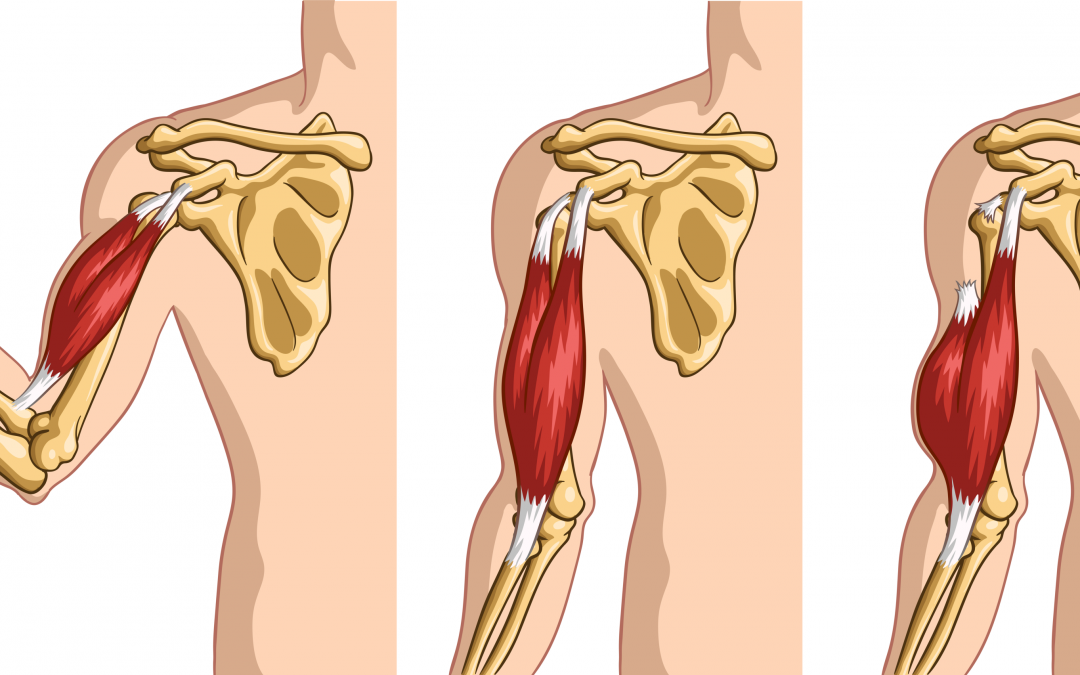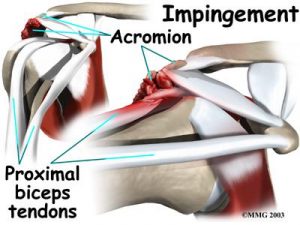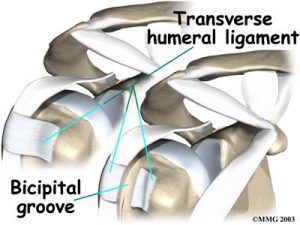This article provides some useful information on biceps tendonitis along with its causes, symptoms and treatment

Biceps tendonitis is also known as bicipital tendonitis. It is basically the inflammation of the tendon that is the link between biceps muscle and forearm or shoulder. Generally, the tendon which connects the top of the bicep muscle to the shoulder. There may be some other factors contributing to biceps tendonitis but the most common one is overuse from exercise, sports or some work activities. This guide explains in detail the causes of this problem and also gives some treatment options.
Contact Metro Physio for help with this problem!
Where is your Closest Clinic?
Read the complete guide to learn more about biceps tendonitis!
Reasons
Continuous or repetitive shoulder actions can cause overuse of the biceps tendon. Damaged cells within the tendon don’t have time to recuperate or the cells are unable to repair themselves, leading to tendonitis. This is common in sport or work activities that require frequent and repeated use of the arm, especially when the arm motions are performed overhead. Athletes who throw, swim, or swing a racquet or club are at greatest risk.
Years of shoulder wear and tear can also cause the biceps tendon to become painful. Examination of the tissues in cases of wear and tear commonly shows signs of degeneration. Degeneration in a tendon causes a loss of the normal arrangement of the collagen fibers that join together to form the tendon. Some of the individual strands of the tendon become jumbled due to the degeneration, and other fibers break which both cause the tendon to lose strength. When this happens in the biceps tendon a rupture of the tendon may occur.
Biceps tendonitis can also happen from a direct injury, such as a fall onto the top of the shoulder. A torn transverse humeral ligament can also lead to biceps tendonitis. As mentioned earlier, the transverse humeral ligament holds the biceps tendon within the bicipital groove near the top of the humerus. If this ligament is torn, the biceps tendon is free to jump or slip out of the groove, irritating and eventually inflaming the biceps tendon.
Biceps tendonitis sometimes occurs in response to other shoulder problems which affect the way you use your shoulder, including rotator cuff tears, shoulder impingement, and shoulder instability.
Rotator Cuff Tears
Aging adults with rotator cuff tears commonly end up with biceps tendonitis. When the rotator cuff is torn, the humeral head is free to move too far up and forward in the shoulder socket and can impact the biceps tendon. The damage may begin to weaken the biceps tendon and cause it to become inflamed.
Shoulder Impingement
In shoulder impingement, the soft tissues between the humeral head and the top of the shoulder blade (acromion) get pinched or squeezed with certain arm movements. This pain affects the way you move your shoulder, and often the biceps muscle is overused to compensate or is physically pinched which causes it to become inflamed.
Symptoms
Patients generally report the feeling of a deep ache directly in the front and top of the shoulder. This area will also be sensitive to touch, especially in comparison to the other side. The aching may spread down into the main part of the biceps muscle. Pain is usually made worse with overhead activities. Resting the shoulder generally eases pain.
In addition, the arm may feel weak with attempts to bend the elbow or when twisting the forearm into supination (palm up). A catching or slipping sensation felt near the top of the biceps muscle may suggest a tear of the transverse humeral ligament.
Treatment Options
Nonsurgical Treatment
Whenever possible, doctors treat biceps tendonitis without surgery. Anti-inflammatory medicine may be prescribed to ease the pain and to help patients return to normal activity. These medications include common over-the-counter drugs such as ibuprofen.
A crucial part of non-conservative treatment for biceps tendonitis is Physio Therapy treatment.
Nonsurgical Rehabilitation
Physio Therapy can be extremely effective in treating biceps tendonitis. Your Physio Therapist may use electrical modalities for this purpose such as ultrasound or electrical current. Heat and/or ice can also be very useful in decreasing pain and inflammation so your therapist will encourage you to use heat or ice frequently at home; they can advise you on whether heat or ice is best for your particular injury. Your Physio Therapist may also use massage around the shoulder, into the biceps muscle, and up into your neck area to ease your discomfort and assist with the associated inflammation.
A period of relative rest will also make a notable improvement in your shoulder pain. Relative rest indicates that you do not have to stop doing all activity, but rather that you stop or limit the amount of those activities that aggravate your shoulder. Resting your shoulder is crucial, along with simultaneous Physio Therapy treatment, to calm the pain and inflammation associated with your injury.
Once the pain and inflammation are under control, your Physical Therapy treatment will focus on regaining the range of motion, strength, and coordination in your shoulder.
Surgery
Patients who are improving with conservative treatments do not typically require surgery. Surgery may be recommended, however, if the problem doesn’t go away or when there are other shoulder problems present besides the biceps tendonitis.
Biceps Tenodesis
Biceps tenodesis is a method of reattaching the top end of the biceps tendon to a new location. Studies show that the long-term results of this form of surgery are not satisfactory for patients with simple biceps tendonitis. However, tenodesis may be needed when the biceps tendon is severely degenerated or when shoulder reconstruction for other problems is needed.
A common method of performing a biceps tenodesis is called the keyhole technique. The keyhole describes the shape of a small hole made by the surgeon in the humerus. The end of the tendon is slid into the top of the keyhole and pulled down to anchor it in place.
This surgery can be done using the arthroscope. The tenodesis procedure is usually combined with other procedures such as acromioplasty which was described above. If this is the case, the surgeon will simply continue using the arthroscope to do the tenodesis procedure if possible. Again, the advantage of using the arthroscope is that less normal tissue is damaged and this may result in faster healing and recovery.
If the procedure is performed using the open method, however, the surgeon begins by making an incision on the front of the shoulder, just above the axilla (armpit). The overlying muscles are separated so the surgeon can locate the top of the biceps tendon. The end of the biceps tendon is removed from its attachment at the top of the glenoid. The tendon is prepared by cutting away frayed and degenerated tissue.
The transverse humeral ligament is split, exposing the bicipital groove and an incision is made along the floor of the bicipital groove.
The bleeding from the incision encourages scar tissue to form that will help anchor the repaired tendon in place.
A burr is used to form a keyhole-shaped cavity within the bicipital groove. The top of the cavity is round. The bottom is the slot of the keyhole, which is made the same width as the biceps tendon.
The surgeon rolls the top end of the biceps tendon into a ball. Sutures are used to form and hold the ball in place. The elbow is then bent, taking tension off the biceps muscle and tendon. Next the surgeon pushes the tendon ball into the top part of the keyhole.
As the elbow is gradually straightened, the ball is pulled firmly into the narrow slot in the lower end of the keyhole, which anchors the tendon.
Post-Surgical Rehabilitation
Some surgeons recommend their patients start a gentle range-of-motion program immediately after surgery.
Arthroscopic procedures that simply clean out the joint, such as acromioplasty (without a tenodesis,) progress very quickly with regards to rehabilitation and the shoulder requires minimal precautions. If you have had a tenodesis, however, whether it was done arthroscopically or with an open incision, you will need to be cautious with several shoulder activities and will need to avoid heavy arm activity for three to four weeks. This will allow the new site of the attached biceps tendon to heal adequately before it is stressed.
You may be required to wear a sling to support and protect the shoulder for a few days after surgery whether you have had an open or arthroscopic procedure. Your surgeon or Physio Therapist will advise you when it is safe to stop using the sling; it is rarely used for long. If there is pain when you are not using the sling due to the weight of the shoulder, it can be protected from the hanging weight of the arm by slipping your thumb into the waist of your pants, or jeans pocket.
Link to the original post:








